Which season is beautiful in Hanoi?
The most ideal time to travel to Hanoi is in the fall from August to November and spring from March to April. Many people think that Autumn is the most beautiful weather of the year in Hanoi, with The sky is clear blue, the wind is chilly, the yellow leaves are falling, the faint smell of milk flowers... Spring has come and the weather is warm, the streets seem to be wearing new clothes as the trees sprout and flowers bloom ...
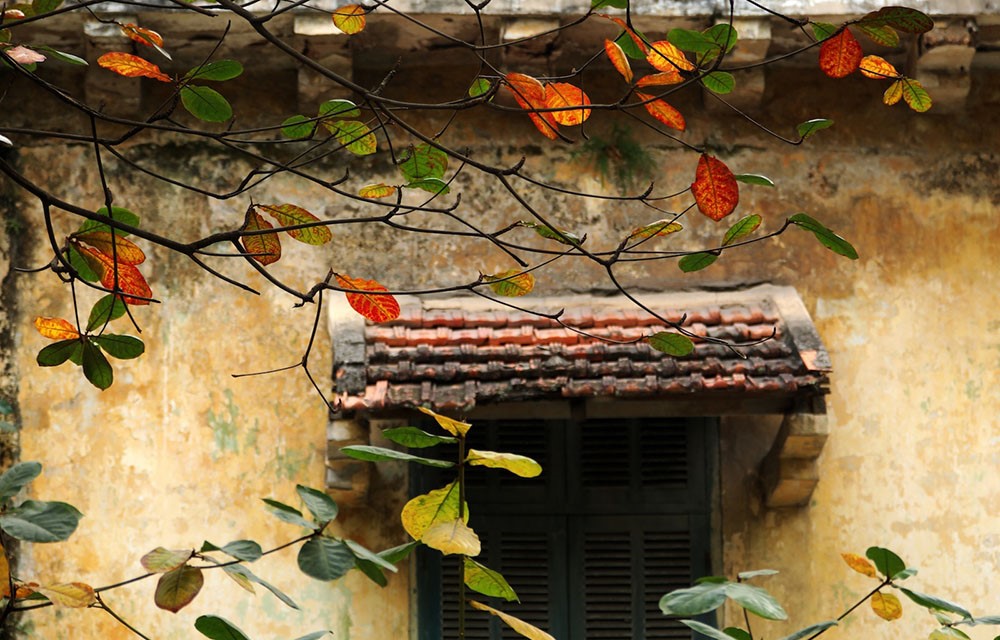
Getting Around in Hanoi
Hanoi is considered the heart of Vietnam, so visitors can travel easily to the capital by plane, train, bus, private car or motorbike from other provinces.
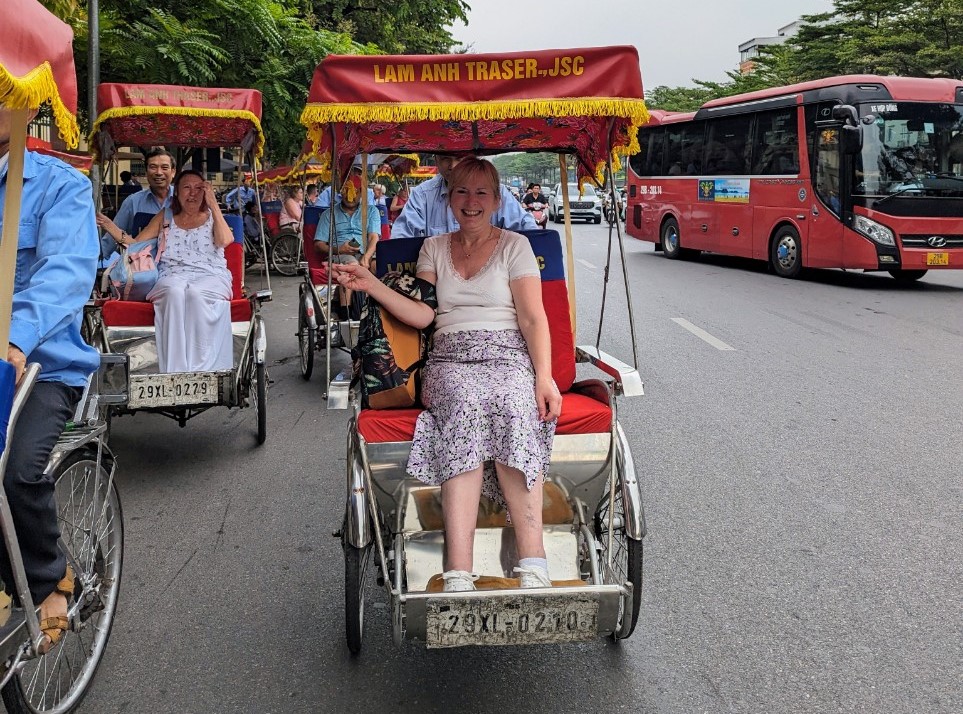
To move around the city, you can go by car, motorbike or bicycle. But the experience will be more poetic if you sit on a cyclo and admire 36 streets, or go on a three-wheeled motorbike or vintage Vespa tour . Another suggestion worth considering is a double-decker bus, ticket prices range from 130,000 - 599,000 VND.

What's interesting about exploring Hanoi?
Sightseeing
1. Railway Cafe
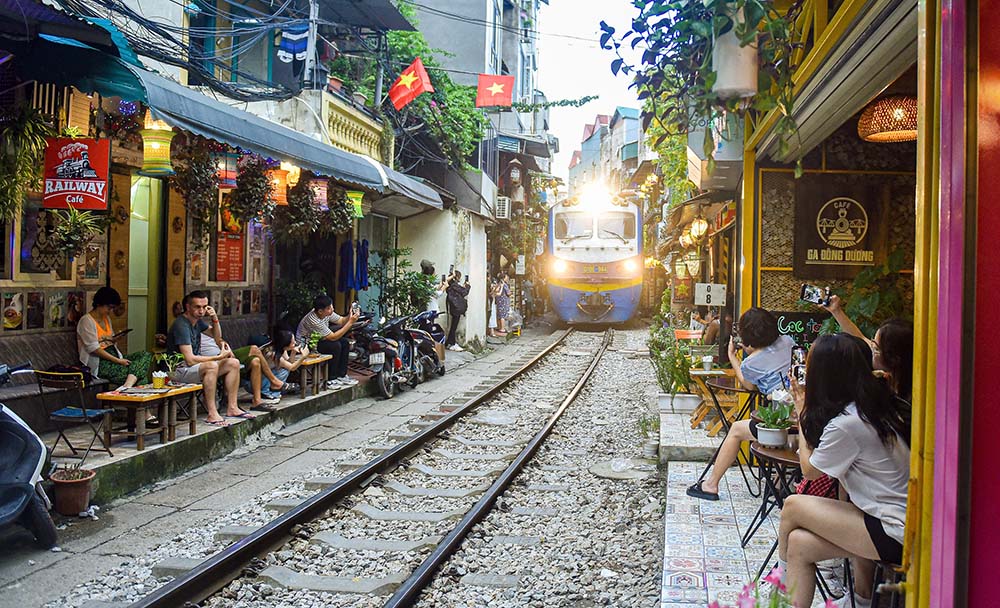
Hanoi's railway cafe neighborhood appeared during the French colonial period. At that time, railway workers began building houses next to the corridor. Then a small hamlet was formed with many happy and sad stories to this day.
2. Imperial Citadel of Thang Long
Thang Long Imperial Citadel is a world cultural heritage located in the heart of Hanoi and has a history of more than 1,300 years. This place contains unique relics and relics, demonstrating the history of Thang Long - Hanoi and the history of the Vietnamese people through many eras. Address: 19C Hoang Dieu, Dien Ban, Ba Dinh.
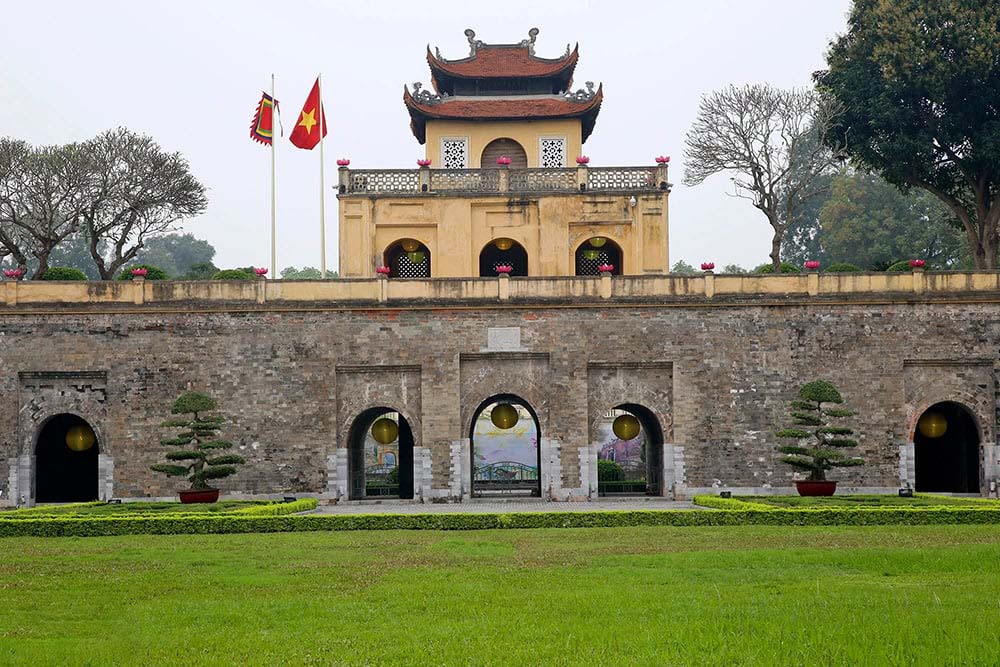 Thang Long Imperial Citadel was recognized by UNESCO as a world cultural heritage in 2010.
Thang Long Imperial Citadel was recognized by UNESCO as a world cultural heritage in 2010.
3. Hoan Kiem lake
Hoan Kiem is a natural freshwater lake of Hanoi city, connecting the streets of Hang Ngang, Hang Dao, Cau Go, Luong Van Can, Lo Su... with the Western Quarter planned by the French more than a century ago. The centuries are Bao Khanh, Nha Tho, Trang Thi, Hang Bai, Dinh Tien Hoang, Trang Tien... Walking around the lake, in addition to enjoying the fresh nature in the middle of the city, you can visit Ngoc Son temple and the old town.
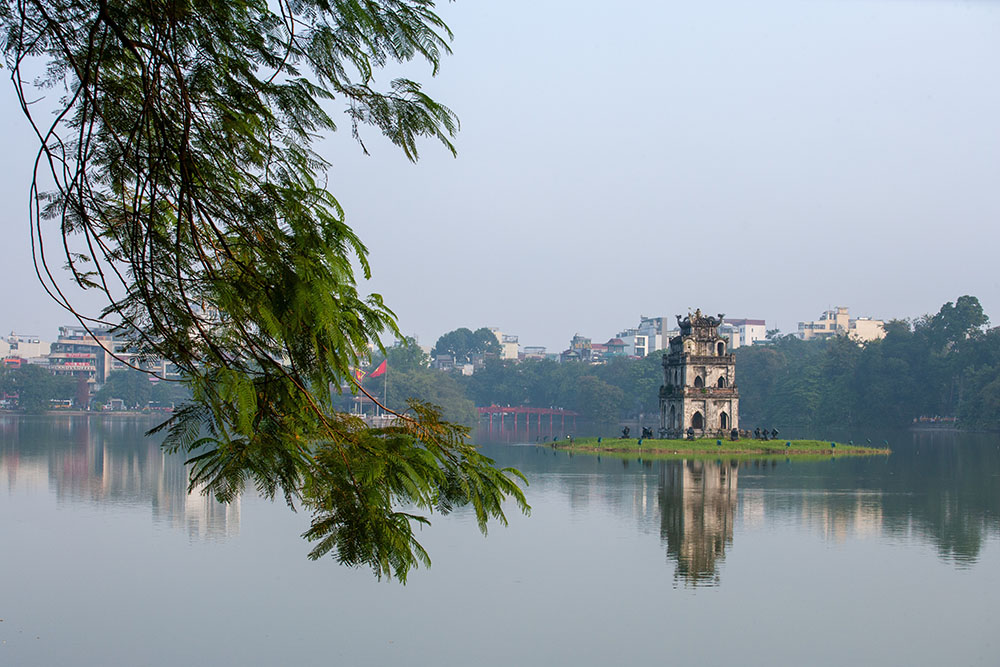
4. Long Bien Bridge
Not only simply spanning the two banks of the Red River, Long Bien Bridge is also a mark connecting the present and the old memories of people who love Hanoi. Long Bien Bridge was built in 1898, people also call it Song Cai Bridge or Bo De Bridge because the bridge spans Bo De wharf, Gia Lam, Hanoi. With a length of 1,682 m and an 896 m long approach bridge, Long Bien bridge is divided into 9 frames, each frame is 61 m long. According to the original design, the bridge has a total of 19 steel beam spans placed on 20 pillars over 40 m high.
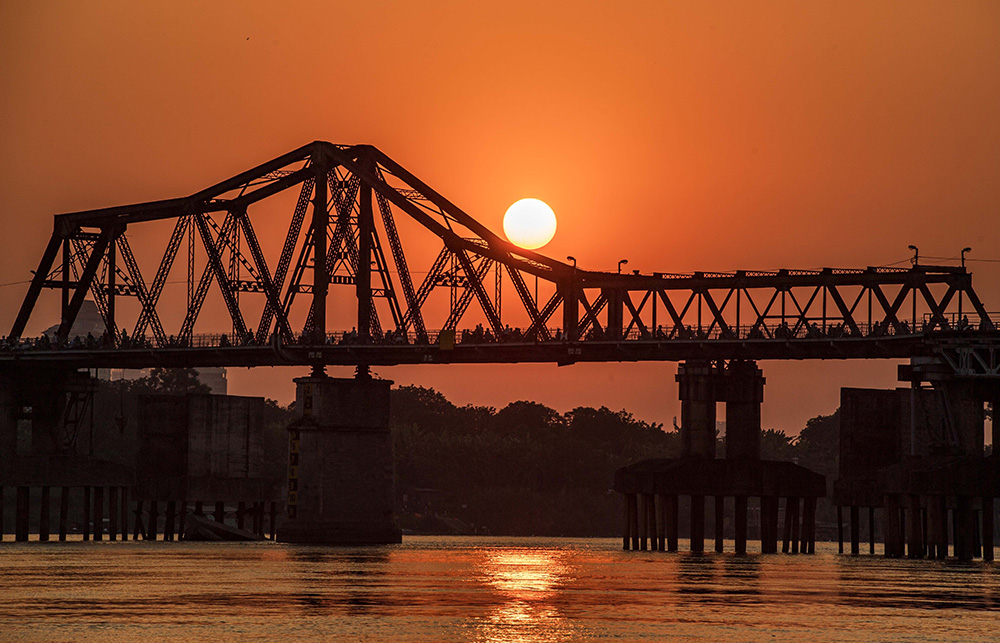

5. Tran Quoc Pagoda
Located on an island east of West Lake, Tran Quoc Pagoda was once among the most beautiful pagodas in the world. The pagoda has a history of 1,500 years, being the Buddhist center of Thang Long capital during the Ly and Tran dynasties. The work was recognized as a national historical and cultural relic in 1962. In 2003, the pagoda held the inauguration of the 15 m high, 11-storey Luc Do lotus stupa
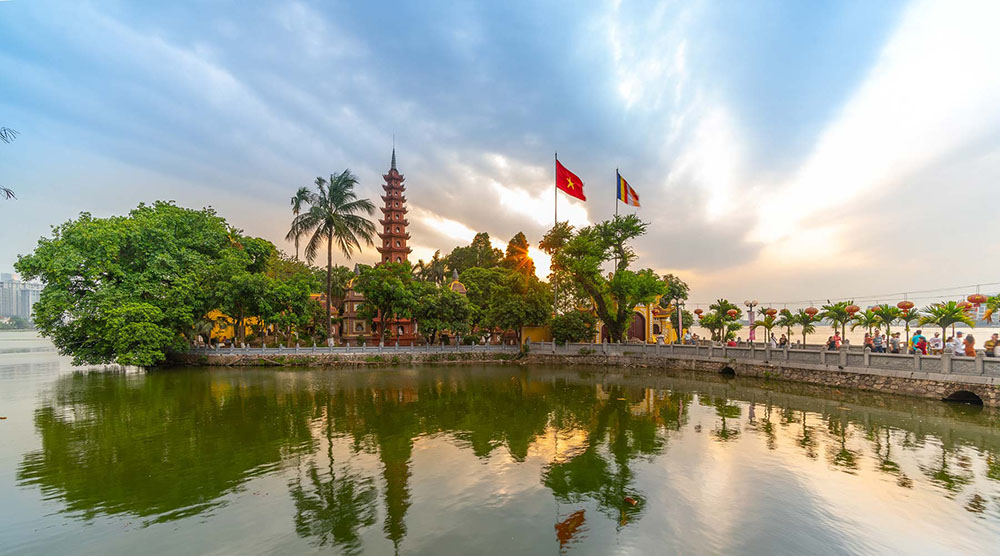
6. Quoc Tu Giam Temple
This is the first university in Vietnam. Today, visitors can visit the stone steles and solemn grounds with lotus ponds and gun ponds. The Temple of Literature is a rare peaceful and quiet place in the middle of a bustling city. Visitors will feel the harmony between ancient and modern times when coming here through the thousand-year-old walls.

The Temple of Literature was built in 1070 under the reign of King Ly Thanh Tong. In 1076, King Ly Nhan Tong established Quoc Tu Giam House.
This place also preserves many precious artifacts and documents, especially 82 doctoral steles that have been recognized by UNESCO as "World Documentary Heritage".
7. Ho Chi Minh Mausoleum
For Vietnamese, this is one of the most important attractions in the country. Tourists come to pay their respects to President Ho Chi Minh. Visitors need to keep quiet, wear appropriate clothing and not take photos in prohibited areas.
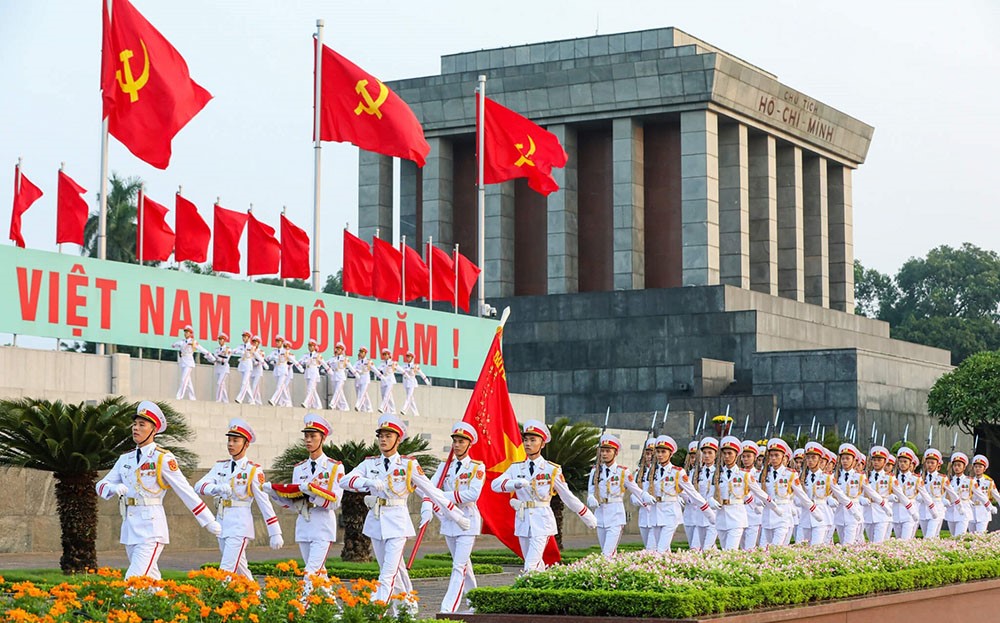
Attending the flag-raising ceremony in the morning is a special experience at President Ho Chi Minh's mausoleum. If you miss it, you can rest assured to walk around the city and come back here to participate in the flag lowering ceremony at 9pm every day. A solemn atmosphere enveloped Ba Dinh Square as the loudspeaker sounded to announce the upcoming flag-lowering ceremony. People lined up neatly, watching the group of guards solemnly lower the National flag to the music of the song "Uncle still marches with us".

8. One Pillar Pagoda
The building is one of the oldest temples in Hanoi. The pagoda was built on a wooden trunk more than 1,000 years ago. In the 1950s, the original wooden trunk rotted so it was replaced with a concrete column. Western visitors should come here to walk around this area because the surrounding housing projects are among the most beautiful and impressive in Hanoi.
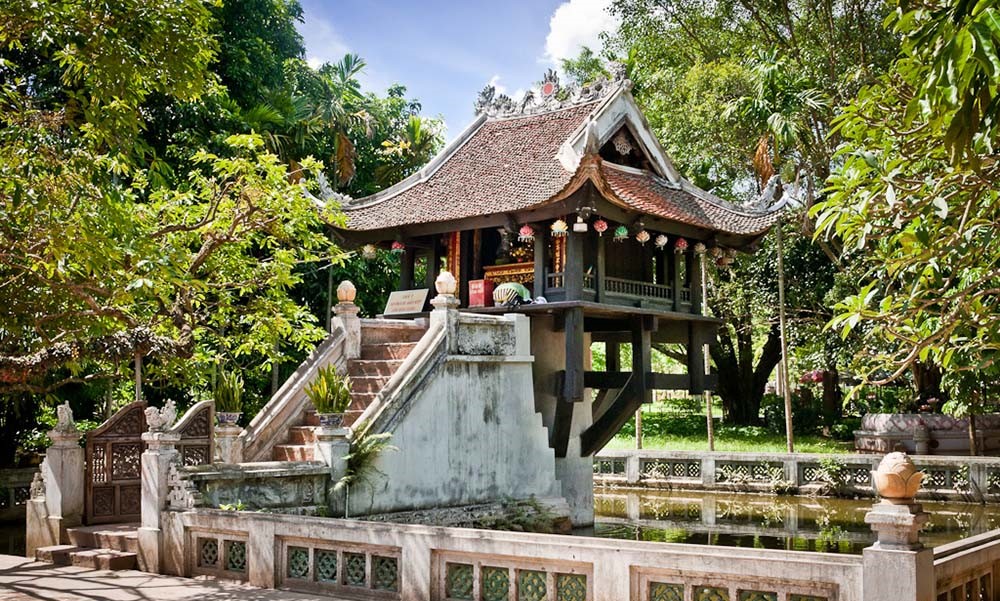
9. Old Quarter
Just let your feet lead the way, you will discover the most about the colorful and nostalgic streets of the capital. No destination, no predetermined route, just turn right, turn left or go straight. This street is full of toys, the other street is filled with shoes, clothes, antiques, or sometimes tombstones and motorbike parts.

If you come here during off-hours, the experience will be even more interesting. You must always be ready to avoid people and cars on the road. Just like that, 1,000 years of Hanoi's history flows through the streets like blood flowing through each vein, breathing into life the breath of both the past and present.
10. Museum
Destinations not to be missed when coming to any city are the museums and historical sites. One of the places most tourists check in is the Ethnology Museum. The Museum of Ethnology currently stores and displays 15,000 artifacts, 42,000 documentaries, pictures and thousands of other documents about 54 Vietnamese ethnic groups.

Besides, tourists also go to the Vietnamese Women's Museum , Hanoi Museum, National History Museum or Hoa Lo Prison , Hanoi Flagpole relic... to learn about culture and history. of the city.

What to see?
In addition to visiting scenic spots, visitors should enjoy art shows imbued with national identity in Hanoi.
1. Water puppetry
This is a stage art that tourists should see when coming to Hanoi. This art has a tradition of more than 1,000 years in Vietnam. There are two addresses that many visitors visit: Thang Long Puppet Theater at 57B Dinh Tien Hoang and Vietnam Puppet Theater at 361 Truong Chinh.

2. Listen to Ca tru
Ca tru originated in the 11th century, the style bears many similarities to Japanese geisha ceremonies and opera performances. Initially, Ca tru was considered entertainment for the nobility in the royal palace, then it entered the common cultural space of modern Hanoi. Ca tru has five main performance spaces: Ca tru at the communal house (singing at the temple gate to worship gods), ca tru at the court (enjoying ca tru by the dignitaries), ca tru at home, ca tru singing thi, ca tru cabaret. Visitors can listen to Ca Tru at Hanoi Ca Tru Club at 42 Hang Bac, Ca Tru Thang Long 146 Tu Hoa.
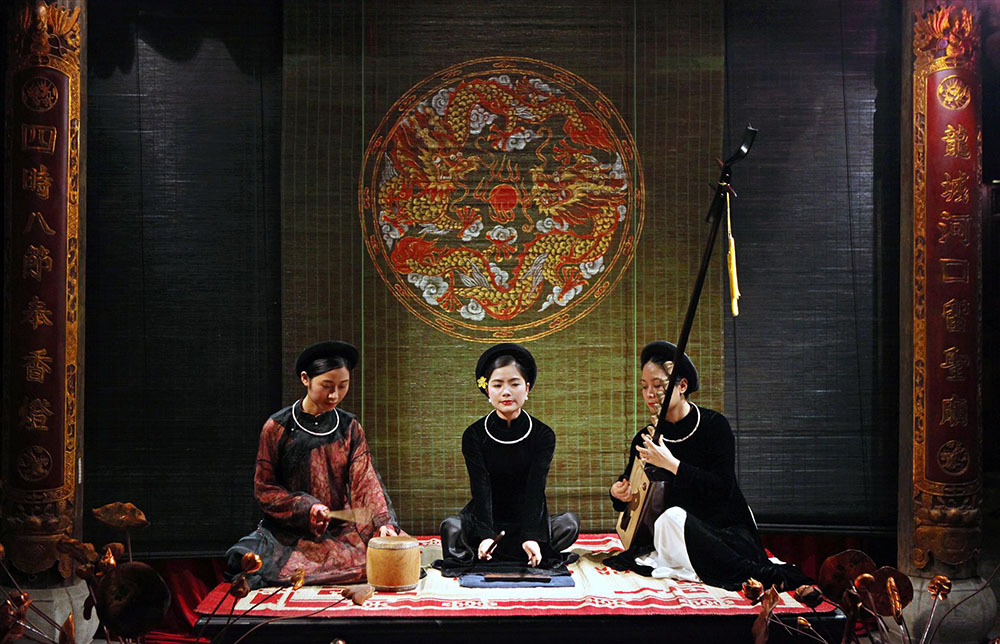
3. Real-life show
Essence of the North is a real-life show on stage at Thay Pagoda , at the foot of Thay Mountain, Sai Son commune, Quoc Oai district, Hanoi. The show takes place on a 4,300 square meter lake, taking visitors into the lives of Northern farmers through sound and light performances. Most of the actors participating in the scene are farmers from Quoc Oai district.
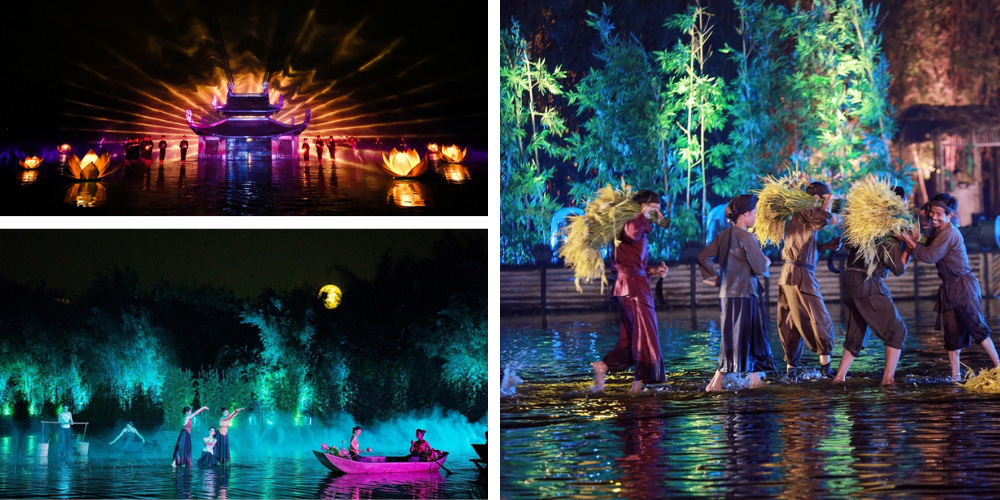
In addition to the play, visitors can also directly experience traditional Northern culture outside the stage with shops selling banh gio, banh te, sticky rice cake, sticky rice wrapped in lotus leaves and banana leaves, peanut candy, and candies. Hua. Tourists can buy and eat on small chairs in the middle of the garden to the sound of mandarin music.
What to do in Hanoi?
1. SUP on West Lake
Waking up when it's about to dawn, you can drive to West Lake and experience water games like SUP and kayaking. The appropriate time is usually 5am-7pm, or late afternoon. You can find boats and planks to rent at shops on Lac Long Quan, Au Co, Trich Sai streets... with prices from 250,000 VND per day.

2. See the panorama of Hanoi from above
Coming to Hanoi, you cannot miss the Lotte Observation Deck located on Lieu Giai Street, because this is the place where you can see the whole view of the Capital from the 65th floor. Made from transparent glass so you can take creative check-in photos at any angle. The observatory is open from 9am until the end of the day.
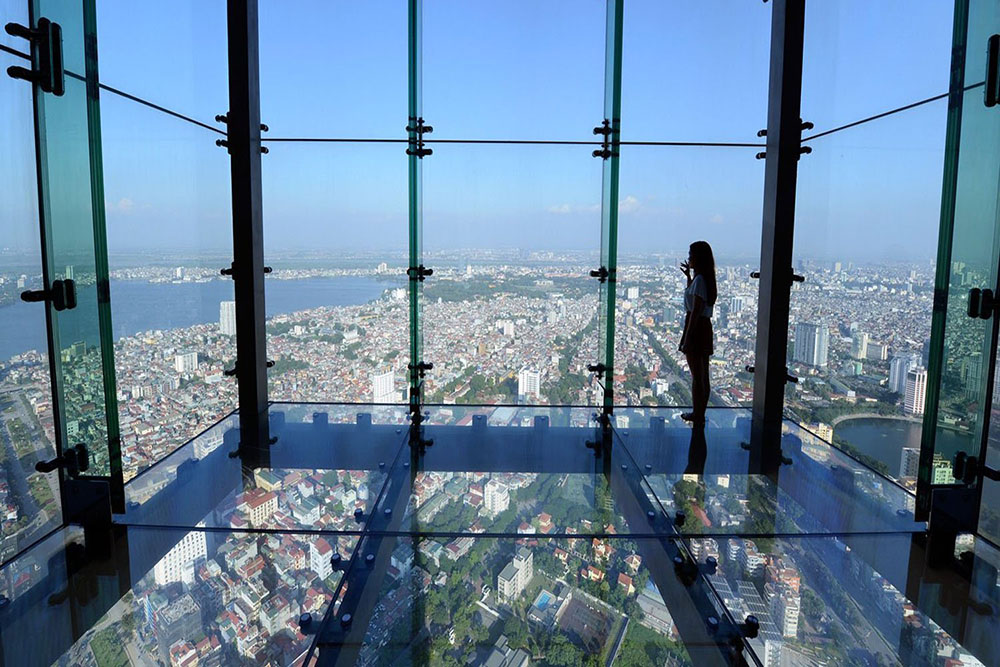
3. Walking street
Every week, Hoan Kiem Lake walking street opens from 6:00 p.m. Friday to Sunday, attracting a large number of both residents and foreign tourists. This space has many fun and entertainment activities, including street art performances. Don't forget to experience the "food tour" around the walking street.

4. Beer Street
In the old town, especially in Ta Hien, Bao Khanh, Luong Ngoc Quyen, there are always many places for you to drink beer or other attractively prepared drinks. This is also one of the busiest nightlife places in the capital.

5. Going to the market
Not Dong Xuan market, Quang Ba flower market and Long Bien wholesale market are two addresses that Westerners whisper to each other that they must visit once if they have the opportunity to come to the capital. The market mainly sells flowers and fruits, but visitors are required to stay up late and get up early to fully see the bustling, bustling atmosphere of a very different Hanoi when night falls.
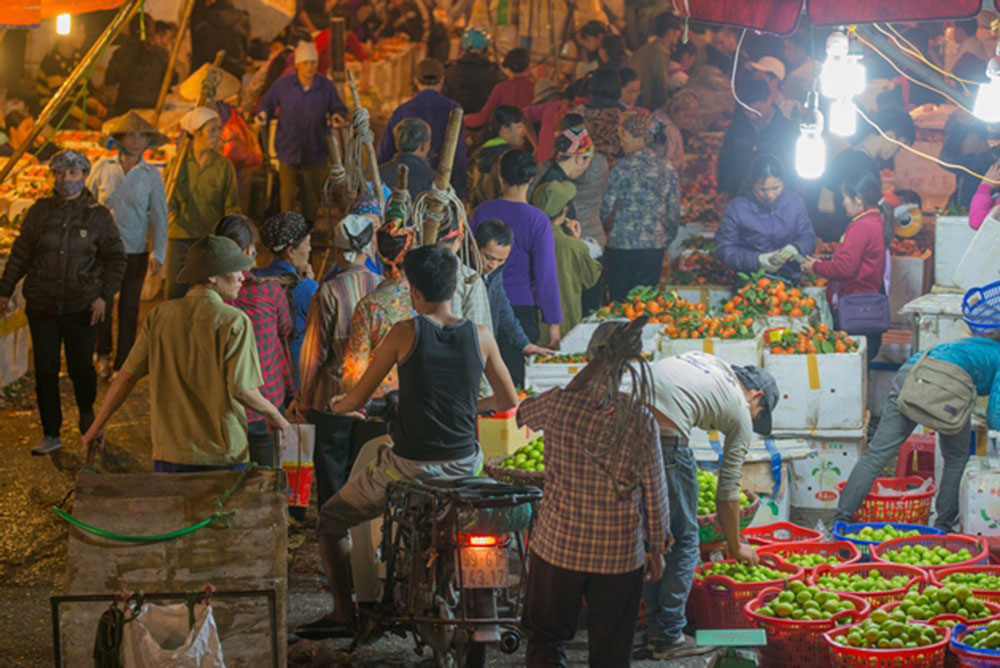
Located right at the foot of Long Bien bridge, Long Bien wholesale market is bustling all year round, the most famous being the fruit wholesale flea market. From 8:00 p.m. the market starts to bustle, getting busier as the night progresses. The Quang Ba flower market is open all night but is most crowded at around 3-4 am, when buyers and sellers are busy. Bouquets of flowers, large and small, piled on the cart, were bustling in and out.
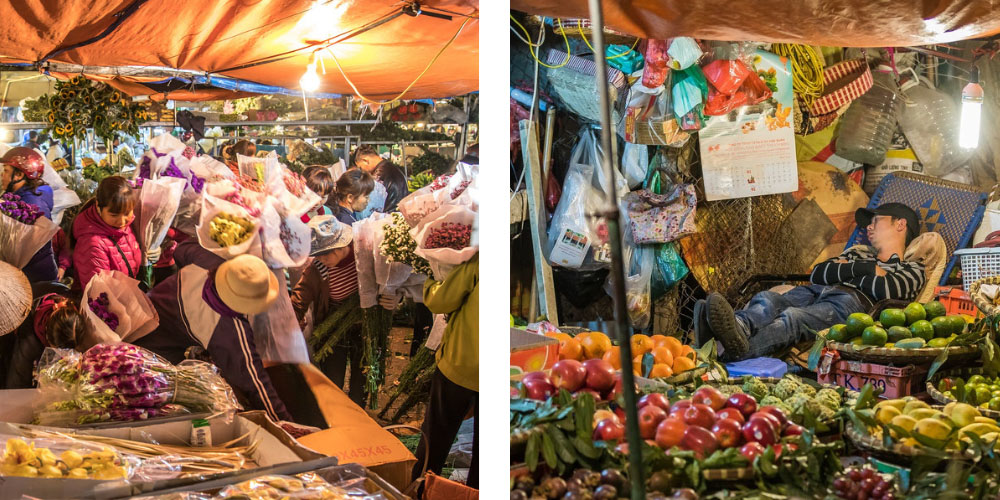
Accommodation
Hanoi has many accommodation options for tourists such as affordable motels, homestays, hotels, resorts... suitable for budgets and preferences. If you go for a walk in the old town, you can rent from "Western backpacker" style beds with dormitory rooms for about 100,000 VND per night, to high-end hotels for 3,000,000 - 5,000,000 VND per night.
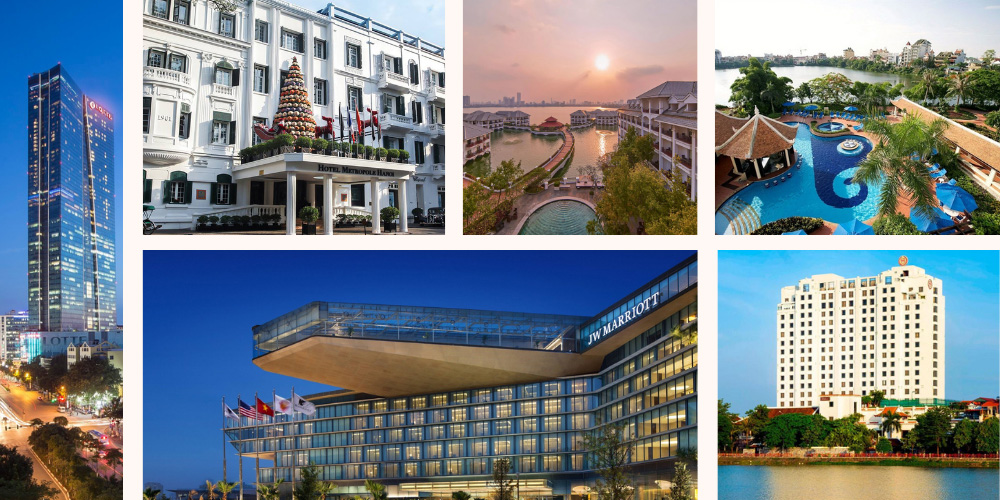
Some special hotels include Sofitel Legend Metropole Hanoi with French colonial architecture, just a few steps from the Opera House is Hilton Hanoi Opera , Apricot Hotel right on the banks of Hoan Kiem Lake, famous hotels. With views of West Lake are Sheraton Hanoi and InterContinental Hanoi Westlake , Lotte Hotel Hanoi on the high floor of the 65-storey Lotte Center building...
LV Travel is a "gateway" that helps you discover new things. Travel enthusiasts can easily choose their favorite experience on each trip with a catalog of thousands of diverse products from sightseeing tickets, discovery tours, entertainment activities to beauty & spa services, Sports and outstanding events. With LV Travel, the travel experience is more perfect, simpler and more convenient than ever.

